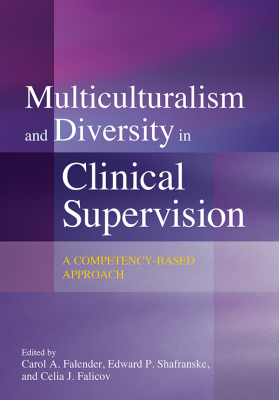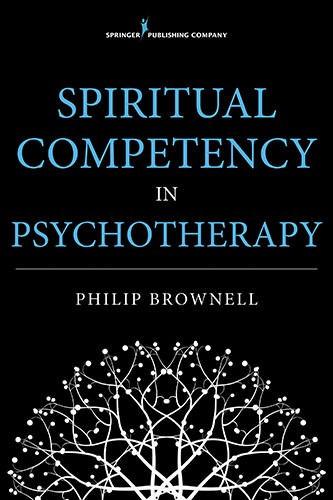Dec 2, 2014 | Book Reviews
 Multiculturalism and Diversity in Clinical Supervision: A Competency-Based Approach, the potential for mixing two very complex domains into one complex book is certainly present.
Multiculturalism and Diversity in Clinical Supervision: A Competency-Based Approach, the potential for mixing two very complex domains into one complex book is certainly present.
Fortunately, there are portions of this book that break down both multiculturalism and supervision into realistic ideas that can be infused into anyone’s personal counseling or supervision style. Whereas some supervision texts are hyperfocused on steps and actions that must be taken to become a competent supervisor, Multiculturalism and Diversity in Clinical Supervision: A Competency-Based Approach takes a step back, instead invoking a more wide-angle view of the supervision process and how multiculturalism is central throughout it. This comprehensive approach is most readily apparent in Chapter 2, where the authors illustrate supervision and culture as interwoven circles in which the client’s, the counselor’s and the supervisor’s personal and cultural values collide within every interaction. Furthermore, the author breaks down each of these levels using vignettes and examples to show the reader how these different areas connect and collide with one another. While this information does not give a map or guideline of how to conduct supervision, it does invoke further contemplation about how one’s own personal tendencies and others’ backgrounds can affect the supervision process, a topic that is often skimmed over in traditional supervision literature.
While the focus of this book is unique and much needed in the supervision literature base, there are some limitations to how the authors structured the text, the most notable of which is that this book is clearly geared toward psychologists and not counselors. For a new or novice supervisor, this omission may prove problematic, as the basic building blocks of supervision for counselors are absent.
The second critique of this book is the creation of its chapters. Instead of following a traditional outline in which each chapter builds toward the next, further elaborating and clarifying ideas from the previous chapter, this text reads more as a series of disconnected articles that have been compiled into one volume. Therefore, each chapter is self-contained, with its own beginning, middle and end, as well as its own particular writing style. The lack of continuity makes this text a somewhat arduous read at times.
But overall, the macro-level focus of Multiculturalism and Diversity in Clinical Supervision: A Competency-Based Approach is a refreshing outlook on how the personal and cultural qualities of counselor and supervisor intertwine within the supervision process. On one hand, the manner in which this book is written may make it a difficult selection for counselors and counselors-in-training who do not yet have a solid foundation in counseling supervision. On the other hand, counselors and supervisors who are up to date on the current counseling supervision literature may find that the ideas within this book can spark self-reflection on how their own personal qualities and cultural orientation arise in the supervision process.
Reviewed by: Mark P. Eades, NCC, University of North Carolina at Greensboro, Greensboro, NC.
Falender, C. A., Shafranske, E. P., & Falicov, C. J. (Eds.). (2014). Multiculturalism and diversity in clinical supervision: A competency-based approach. Washington, DC: American Psychological Association.
Dec 2, 2014 | Book Reviews
 Philip Brownell starts Spiritual Competency in Psychotherapy with a quote from the Bible, which may put off some non-Christian counselors. However, he issues a disclaimer early in the text that although he brings in excerpts from other religious leanings, he generally discusses what he knows best—Christianity. The book, divided into three parts, has eighteen chapters that describe spirituality and religion according to both older and more recent religious beliefs.
Philip Brownell starts Spiritual Competency in Psychotherapy with a quote from the Bible, which may put off some non-Christian counselors. However, he issues a disclaimer early in the text that although he brings in excerpts from other religious leanings, he generally discusses what he knows best—Christianity. The book, divided into three parts, has eighteen chapters that describe spirituality and religion according to both older and more recent religious beliefs.
The first part of the book includes the first through the fifth chapters. Brownell delves into spirituality through the lenses of three faiths—Judaism, Christianity and Islam. He journeys with the reader through Eastern philosophies to the New Age movement. Brownell then discusses the similarities and differences between spirituality and religion, and makes it clear that though many apply the two terms interchangeably, clear differences exist. He touches on spirituality and religion from the psychological, philosophical, theoretical and coherentist points of view. He ends the first part of the book by discussing the process of personal spirituality and ethical issues for the various helping professions. Brownell uses the diagram of a strand of DNA to explain spirituality and religion as both a process and a relationship. Using personal anecdotes, he takes the reader through the process of spirituality and religion, and growth in spiritual maturity. Though Brownell does not advocate counselors necessarily sharing their clients’ spiritual and religious practices, he implores counselors to understand how these play a part in clients’ make-up.
In part two of the book, Brownell writes about how spirituality looks in therapy, providing a face for therapy in practice, especially from the Christian perspective. He admonishes counselors to “treat religious experiences as legitimate” (p. 50), but encourages them to question these experiences respectfully enough to know which aspect can be used to help clients. He avers that spirituality is more personal and individual, whereas religion is a communal experience. He provides examples from various religious beliefs to explain these differences to the counselor inclined towards spiritual competency. Much as researchers in multicultural competency in therapy advocate areas for counselor concentration, so Brownell urges counselors to be aware of their own assumptions, biases, behaviors and values, as they recognize how similar and/or different they may be from their clients.
Part three of the book deals with common spiritual issues encountered in therapy. Brownell approaches this part from an existential perspective and establishes that every counselor can grow in spiritual competency to help clients achieve the help they need. The section would have been complete with case studies of counselors applying spiritual competencies with clients from various religious orientations, but Brownell provides additional information. He urges counselors to work especially in the here-and-now with clients and reaffirms what most research on client outcomes indicates as helpful—making connections with clients. Brownell demonstrates how spiritual competency endows counselors with skills necessary to help clients take bold steps and explore uncertain areas in their lives. Finally, Brownell addresses a sensitive topic in religious circles—the abuse of clients by religious leaders. He emphasizes the burden upon counselors in upholding the trust of clients, and also encourages counselors to work with religious leaders to benefit clients. Brownell points out that counselors deal with clients as well as their faith community and what that faith teaches. Counselors are not to act as theologians or evangelists but are encouraged to discover how clients interpret their faith and how this interpretation manifests in therapy. He ends the book with a look at death—that of both clients and their loved ones—and counselors’ role in providing support for clients’ meaning making.
In summary, Brownell’s book advocates for the need to combine ethical codes in any helping professional field with good judgment and knowledge of various religious beliefs. Though many examples are Christian-based, the book is still relevant for both the beginner and expert counselor. It is fashioned in a way that allows the reader to move to any chapter that addresses his or her particular needs. Although Brownell discloses his Christian background early on, he does not approach the subject of spirituality with the emphasis one might have expected from a minister.
Reviewed by: Hannah E. Acquaye, doctoral student in counselor education, University of Central Florida, Orlando, Florida.
Brownell, P. (2015). Spiritual competency in psychotherapy. New York, NY: Springer.
The Professional Counselor
http://tpcjournal.nbcc.org
 Multiculturalism and Diversity in Clinical Supervision: A Competency-Based Approach, the potential for mixing two very complex domains into one complex book is certainly present.
Multiculturalism and Diversity in Clinical Supervision: A Competency-Based Approach, the potential for mixing two very complex domains into one complex book is certainly present.
